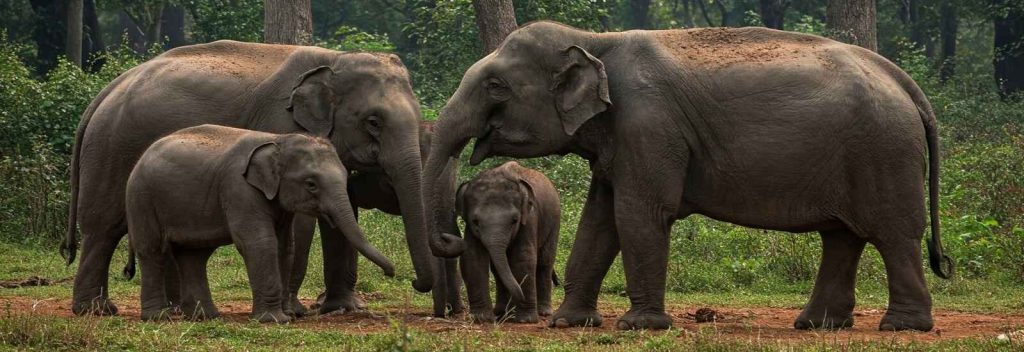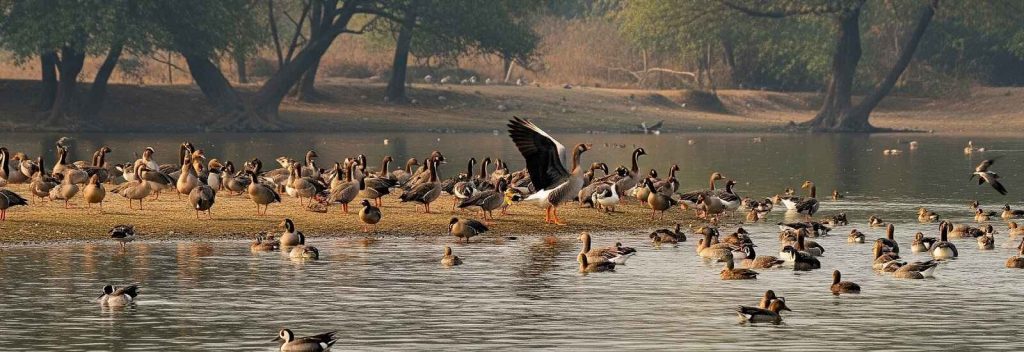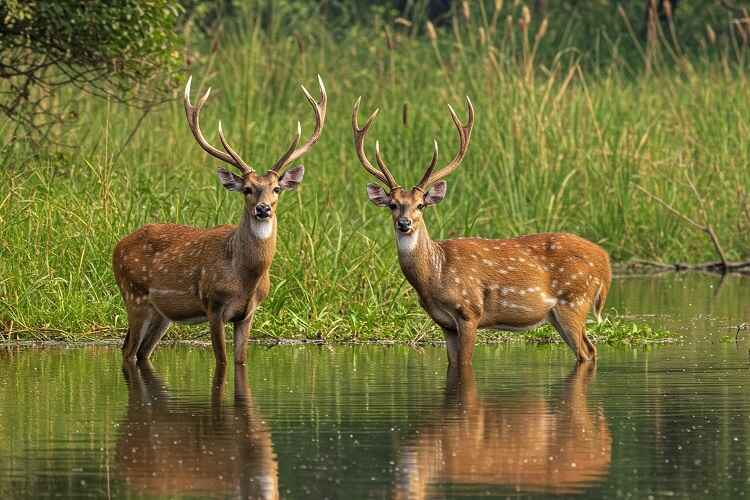Read about the biodiversity of varied animals like Royal Bengal tigers, swamp deer, rare birds, and reptiles, and information on where to see them and when.
Kishanpur Wildlife Sanctuary is a well-kept secret in the wilds of India that lies in the center of the Terai Arc Landscape. It is found close to the towns of Mailani and Bhira in Uttar Pradesh and is a component of the Dudhwa Tiger Reserve. The entire area of Kishanpur covers about 227 square kilometers, and it is one of the most outstanding secrets of Indian ecological prosperity. Compared to most of the tourist-oriented parks, Kishanpur presents the raw and real experience of the wild, with a combination of Sal forests, grasslands, wetlands, and seasonal watercourses.
Whether you are going to do a safari in the jungle or just love nature and have this interest, here is a peek at the best wild species in Kishanpur Wildlife Sanctuary that you might have the hope of spotting, and the tips on how you can increase the number of sightings.
1). Royal Bengal Tiger: The Top Predator
The mysterious but magnificent Bengal tiger is the dominant creature in Kishanpur. Due to the conservation programmes and the decreased interference of the tourists, this region offers an excellent tiger watching potential. There are the best chances in early morning or late afternoon safaris of the Jhadi Tal region and Padariya Beat.
Spotting Tips:
![]() Choose quiet and slow safaris.
Choose quiet and slow safaris.![]() Take note of the alarm call by langurs or deer.
Take note of the alarm call by langurs or deer.![]() Search around the watering holes in the summers (April to June).
Search around the watering holes in the summers (April to June).

2). Swamp Deer (Barasingha) Jewel of the Grasslands
Kishanpur also forms a very important habitat for swamp deer, locally called Barasingha, which is endangered. They can be found in large herds, especially around Jhadi Tal, a wetland area that has grasslands around it.
They have a reddish coat and magnificent antlers, which make them a photographer’s delight. They also contribute significantly to ecological stability within the sanctuary.
Best Seeing Time:
They graze in the open meadows in the winter sun from October to March.

3). Asiatic Elephant- Periodical Vagrants
The Asiatic elephants can enter the sanctuary in the form of herds, normally eager to move into neighboring forests, although they are not permanent residents. Their presence enhances a magnificent effect in the sanctuary, particularly when they are close to forest corridors that connect Dudhwa National Park and Kishanpur.
Provided you are lucky enough, you can get a glimpse of the herd along forest edges or in monsoon months.

4). Leopard The Silent Hunter
More tricky than a tiger, the leopard also exists in Kishanpur. They like a thick forest cover and are active during dusk and dawn. They are uncommon, but they leave signs through pugmarks or scrape marks on tree trunks.
Hint: Your safari guide will assist in the interpretation of signs of an American leopard movement in recent times-be keen and listen carefully.
5). Hog Deer & Spotted Deer (Chital) – Ordinary and Yet Beautiful
The sanctuary is also swarmed with the hog deer and spotted deer, which are observed in herds passing grasslands and water bodies in large numbers. They are foodstuffs to bigger killers, and are very important in the food chain.
It is a peaceful moment to observe a group of chitals at a forest pond drinking, as the sunlight sets through the Sal trees, which illustrates how peaceful nature is.
6). Sloth Bear-Secretive and there
Sloth bears can be found in Kishanpur Wildlife Sanctuary, although they are not commonly found. They are also night-oriented and would usually go to forest clumps and hunt insects, fruits, and honey. Look out also to see scratch marks in termite mounds, or stones turned over: this is an indication of bear tracks.
7). Reptiles- Stealthy Inhabitants of the Sanctuary
Reptiles, which include: Indian Rock Python, Monitor Lizard, Spectacled Cobra, Rat Snake.
These animals are of paramount importance as far as the ecological balance and the number of rodents is concerned.
8). Abundant Birdlife – A Birdwatcher’s Delight
The place also has more than 450 species of birds and thus is a paradise for ornithologists and bird lovers. In winter, there are migratory birds visiting the wetland and the grasslands, making their color and melodies colorful in the air.
They include some notable bird species: Stork, lesser Adjutant, Black-necked Stork, Sarus Crane, White-eyed Buzzard, Indian Pitta, Osprey, Bar-headed Geese (wintering).
Birdwatching: Best Time:
November-February. Carry binoculars and a silent camera to make birding to the maximum.

9). Wild Boars and Porcupines Exposed as Unrecognized Forest-Inhabitants
Not headline grabbers in their own right, there are also wild boars and porcupines that are often spotted scurrying through the undergrowth. They are also crucial members of the forest ecosystem as they turn the earth and also scatter seeds.
10). Jackals, Hyenas & Civets- Night Visitors
There are also Indian jackals, striped hyenas, and civet cats (primarily nocturnal animals) at Kishanpur. They are hard to see during the daytime safari, but their existence is authenticated by the camera trap and some sightings.
Wildlife Spotting Kishanpur Tips
![]() Best time to visit the Safari: Morning (6.30 9.30 AM) and evening (3.30 6.00 PM)
Best time to visit the Safari: Morning (6.30 9.30 AM) and evening (3.30 6.00 PM)
![]() Best Season: November to April(for comfort and visibility)
Best Season: November to April(for comfort and visibility)
![]() Padaria Beat and Jhadi Tal: best wildlife zones, Safari Zone
Padaria Beat and Jhadi Tal: best wildlife zones, Safari Zone
![]() The Recommended Number of Safaris: At least two safaris of varying periods to boost opportunities
The Recommended Number of Safaris: At least two safaris of varying periods to boost opportunities
![]() Things to bring: Binoculars, a camera with a zoom lens, water, sun protection, and ID proof
Things to bring: Binoculars, a camera with a zoom lens, water, sun protection, and ID proof
Final Thoughts
The Kishanpur Wildlife Sanctuary is rather more than a tiger reserve as it is home to a teeming mass of interesting animals, rare birds, and picturesque scenery. The sanctuary has a relatively quiet tourism atmosphere, which is why it provides peaceful, unhurried experiences that make you closer to nature.
Be it a wildlife photographer, a nature lover, or a traveler, seeking a connoisseur travel, Kishanpur will make you spellbound due to the hidden gems.
Take a jungle safari, eco-tour packages, and by doing so, help to preserve one of the best biodiversity environments in India.


 How To Reach At Kishanpur
How To Reach At Kishanpur
